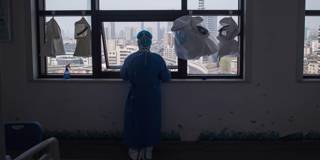China's success in "flattening the curve" of the COVID-19 epidemic has been held up as a model for the rest of the world to emulate. But what the world really needs to understand is that China's "victory" required massive sacrifices by doctors, nurses, and other health workers whose names we will never know.
AUSTIN – Dr. Li, a heart specialist at Wuhan No. 4 Hospital, spent the third week of March preparing for the reopening of the hospital’s general clinics, which closed on January 22, when No. 4 became a key facility for treating COVID-19 patients. After working for two months on the front lines of the coronavirus outbreak, Li is mentally and psychologically at a loss about what to do next. He can’t sleep or eat, he often feels dazed, and sometimes, seemingly out of nowhere, he weeps.
Li’s trauma stands in stark contrast to the image projected by China’s media, which is filled with articles and broadcasts glorifying the government’s response to the epidemic. Amid so much exultation, Li is increasingly reluctant to express fears or concerns to others around him. He has become a different man – one who understands that “life is fragile and weak.”
I met Li (his name has been changed to protect his privacy) online on January 23, the day the city of Wuhan was locked down. I am based in Texas, and my friends and I had set up a WeChat group to donate masks and personal protective equipment (PPE) to hospitals in and around Wuhan. Now that COVID-19 has escalated into a global pandemic, it has become increasingly important that the rest of the world understand what the doctors and nurses in Wuhan – several of whom I now call friends – experienced and are still experiencing. Insofar as China has achieved a “victory” over the coronavirus, it has come at a massive and lasting human cost.

AUSTIN – Dr. Li, a heart specialist at Wuhan No. 4 Hospital, spent the third week of March preparing for the reopening of the hospital’s general clinics, which closed on January 22, when No. 4 became a key facility for treating COVID-19 patients. After working for two months on the front lines of the coronavirus outbreak, Li is mentally and psychologically at a loss about what to do next. He can’t sleep or eat, he often feels dazed, and sometimes, seemingly out of nowhere, he weeps.
Li’s trauma stands in stark contrast to the image projected by China’s media, which is filled with articles and broadcasts glorifying the government’s response to the epidemic. Amid so much exultation, Li is increasingly reluctant to express fears or concerns to others around him. He has become a different man – one who understands that “life is fragile and weak.”
I met Li (his name has been changed to protect his privacy) online on January 23, the day the city of Wuhan was locked down. I am based in Texas, and my friends and I had set up a WeChat group to donate masks and personal protective equipment (PPE) to hospitals in and around Wuhan. Now that COVID-19 has escalated into a global pandemic, it has become increasingly important that the rest of the world understand what the doctors and nurses in Wuhan – several of whom I now call friends – experienced and are still experiencing. Insofar as China has achieved a “victory” over the coronavirus, it has come at a massive and lasting human cost.